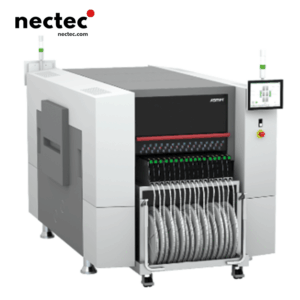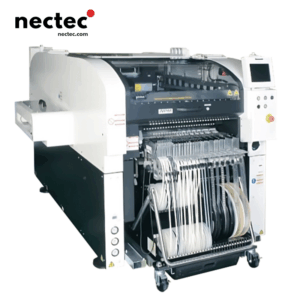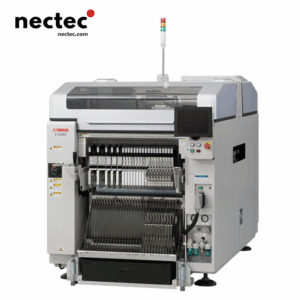The evolution of technology has drastically transformed the landscape of modern manufacturing, paving the way for automation and precision. One of the star players in this transformative journey is the pick and place machine. These machines, equipped with advanced robotics and AI technologies, are increasingly becoming indispensable tools in various industries, including electronics, food recycling, and packaging. In this comprehensive blog post, we will delve into the intricacies of pick and place machines, their workings, applications, and how they are shaping the future of manufacturing.
픽 앤 플레이스 머신이란 무엇인가요?
At its core, a pick and place machine is an automated device designed to pick up components from one location and place them onto a different surface, usually with a high level of precision. Used predominantly in the electronics assembly industry, these machines can handle a variety of components, from tiny resistors to larger circuit board elements. Their functionality extends beyond simple operations – thanks to advancements in technology, many pick and place machines are equipped with vision systems that enable them to identify and sort components effectively.
픽 앤 플레이스 머신은 어떻게 작동하나요?
Understanding the working mechanism of a pick and place machine involves appreciating its major components: the conveyor belts, robotic arms, vision systems, and the software that integrates these systems to perform seamless operations.
1. Conveyor Belts
The journey of a component begins on the conveyor belt, which transports the items to the pick and place unit. The precision of the conveyor belt is crucial for maintaining the correct timing and spacing of items destined for placement.
2. 로봇 팔
At the heart of any pick and place machine is its robotic arm. These arms are engineered to replicate the movements of a human hand, with added factors of speed and accuracy. Depending on the design, these arms may have specialized grippers or suction cups that aid in handling various types of components safely.
3. 비전 시스템
Modern pick and place machines are equipped with sophisticated vision systems, using cameras and sensors that capture images of components. These systems analyze the images to detect the component’s orientation, size, and type, ensuring that the right part is picked accurately.
4. 소프트웨어 통합
All these components are orchestrated by software that manages the operation of the machine. This software enables programming flexibility, allowing users to configure the machine for different tasks and components, significantly reducing setup times between jobs.
픽 앤 플레이스 기계의 애플리케이션
The versatility of pick and place machines means they have a broad spectrum of applications across industries. Let’s take a closer look at some primary sectors where these machines are crucial:
1. 전자 조립
In the electronics industry, pick and place machines are essential for assembling printed circuit boards (PCBs). They can quickly place surface-mounted devices (SMDs) onto PCBs, enhancing throughput and ensuring consistency in production.
2. 식품 산업
In food manufacturing, pick and place machines streamline the packing process. They can pick up various food items and pack them into containers or boxes efficiently, maintaining hygiene and speed.
3. E-commerce and Packaging
As e-commerce continues to grow, pick and place machines find their place in packaging and fulfillment centers. These machines help automate sorting and packing orders, which boosts efficiency and reduces labor costs.
픽 앤 플레이스 기계 활용의 이점
Adopting pick and place machines in manufacturing processes comes with a host of benefits:
1. 효율성 향상
Automating the picking and placing processes eliminates delays associated with manual labor. It improves turnaround times and increases production rates significantly.
2. 향상된 정확도
Technological improvements have made pick and place machines exceptionally accurate. They reduce the risk of human error, ensuring that components are placed exactly where they should be, which is critical for quality control.
3. 인건비 절감
Investing in automation saves on labor costs over time. Once the initial investment in the machinery is made, ongoing operational costs can be significantly lower than employing large manpower for manual processes.
픽 앤 플레이스 머신 구현의 과제
Despite their many advantages, integrating pick and place machines into an existing manufacturing line presents certain challenges:
1. 높은 초기 투자 비용
The cost of acquiring high-quality pick and place machines can be a substantial investment for small or medium-sized enterprises (SMEs). This upfront cost may be a barrier to entry for some businesses.
2. 필요한 기술 전문성
The implementation and maintenance of pick and place machines require skilled personnel. Investing in training is necessary to maximize the benefits of the technology.
3. Potential for Downtime
Like any machinery, pick and place machines can face mechanical issues or require maintenance. This can lead to potential downtime that impacts production schedules.
픽 앤 플레이스 기술의 미래
The future of pick and place machines looks bright as technological advancements continue. Developments in AI, machine learning, and robotics are expected to yield pick and place systems with increased functionalities, including:
1. 향상된 AI 기능
With the integration of AI, pick and place machines can learn from previous operations to optimize their processes further, predicting potential failures before they occur.
2. Collaboration with Cobots
Collaboration between human operators and collaborative robots (cobots) can enhance productivity. Cobots can work side by side with pick and place machines, taking on tasks that require fine motor skills while machines handle heavy lifting.
3. 유연성 향상
The ongoing advancements in pick and place technology are expected to result in machines that can switch between tasks rapidly, allowing manufacturers to adapt swiftly to changing market demands.
In summary, pick and place machines represent an essential advancement in manufacturing technology. Their role in enhancing efficiency and accuracy is irrefutable. As the industry evolves, these machines will undoubtedly play a pivotal role in shaping the future of manufacturing processes across various sectors.









